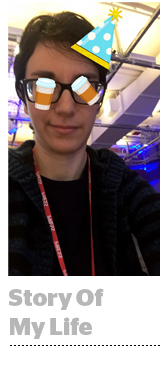
Organic use of Facebook Stories is on the rise, and now Facebook is making the case to advertisers.
On Wednesday, Facebook announced that Stories has 300 million DAUs across its core app and Messenger combined. Facebook Stories ads, which appear between organic Stories as either six seconds of photos or 15 seconds of video, are also now available to all advertisers globally.
All the same audience targeting, optimization and measurement capabilities are available for Stories as for any other format across Facebook’s family of apps.
Advertisers will be able to select to include Facebook Stories as an additional placement for their news feed or Instagram Stories ad campaigns. Facebook likes to encourage advertisers to let its algorithm select where to place ads across its apps for what it terms the most “optimized results.”
Next up, Messenger Stories ads are set to roll out in the coming weeks, which will give businesses another opportunity to extend the reach of their Stories campaigns. To round out the Stories fam, WhatsApp started testing its own disappearing Stories-like feature, dubbed Status, in September.
Facebook has been gunning to boost usage of its Stories format. To attract advertisers, Facebook needs to serve up scale. With 300 million DAUs, the format will become a more compelling proposition to marketers.
Facebook declined to share an exact breakdown between the its Facebook and Messenger Stories counts, but Facebook Stories DAUs were 150 million in May of this year, and 70 million people were using Messenger Stories on a daily basis as of September 2017. Users included in the 300 million count are deduped between Facebook and Messenger, meaning a user of both platforms is only included once.
By comparison, Instagram Stories has 400 million DAUs, which is double Snapchat Stories’ user base. Growth for the format on Facebook is arguably slower than on Instagram, because it’s a less inherently visual platform than Instagram.
Investors have been pinning their hopes on Stories, with Instagram in particular, as a place for Facebook to deal with the issue of ad load maxing out in the news feed. But the Stories format monetizes at a slower rate than news feed ads, because a user can easily scroll through multiple ads in a few seconds as they zip along the news feed, as opposed to Stories ads, which require users to tap into the experience.
Maria Smith, director of product for Facebook app monetization, demurred that making money with Stories is a challenge.
“We’re not concerned – it’s early days,” Smith said. “We’ll continue to invest here and see where it goes as we progress with our investment.”
Smith pointed to better results for ad campaigns when marketers include Facebook Stories as part of an overall campaign.
To promote its snack boxes in the United Kingdom, for example, KFC ran two campaigns, one using just Instagram Stories and a second tapping into both Instagram Stories and Facebook Stories. The latter resulted in a 58% lower cost per view, 19% lower CPMs and a 17% higher view-through rate.
“The marketer experience is always what the team focuses on, the value we can drive for advertisers and users,” Smith said. “The rest will follow.”
Facebook also says it isn’t bothered about Instagram cannibalizing users from Facebook or about Facebook Stories causing declines in Instagram Stories usage, said Liz Keneski, head of research for Facebook Stories.
“This is about unlocking the potential on all apps,” Keneski said. “Instagram Stories is growing, Facebook Stories is growing – we’re not concerned about where people share. We’re not trying to get them to share anywhere, we’re allowing them to choose what the best place is to share for them.”
This post was syndicated from Ad Exchanger.


More Stories
Three Seattle TV Anchors Make the Move to Radio
Thirst Trap Ahead: Progressive Says Drive Safely Around Calvin Klein’s Bad Bunny Billboards
People Are Surprised JCPenney Is Trendy. Its Comeback Ads Challenge That.